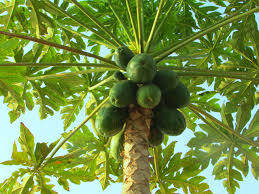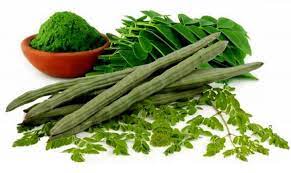
Rice is the staple food of more than half of the world population, with more than seven hundred million (700,000,000) metric ton produced annually at a global level. Most of the rice is grown and consumed in the Asian region, from Pakistan in the west to Japan in the east.
Rice is the second most important cereal crop after maize in the world. It is a crop that ensures food security in many of the developing countries of the East Asia and the South-East Asia regions. Almost ninety percent (90%) of rice is produced and consumed in Asia, and ninety-six percent (96%) in developing countries.
Rice production has increased faster than population over the last three decades, in spite of being produced on small and marginal farms in countries with extreme population pressure and limited land resources.
Rice is classified as Asian rice with the botanical names of Oryza sativa and African rice known as Oryza glaberrima.
It is a cereal grain that grows in swampy areas, in regions with high rainfall but can still be grown in areas with little rainfall through the use of water-controlling terrace systems; it’s sensitive and requires a lot of care and attention to grow well.
Nigeria is the largest producer of rice in Africa, producing about eight million, four hundred and thirty-five thousand (8,435,000) tons annually, followed by Egypt, Madagascar, Tanzania and Mali according to the Food and Agriculture Organisation of the United Nations (FAO).
Rice vinegar is a vinegar made from fermented rice and vinegar is a pungent, acidic liquid prepared by fermentation of ethanol present in wine, champagne, brew, distilled grain alcohol, and cider. It has been used since nearly 2000 BC and is one of the oldest fermented products globally. It contains acetic acid, gallic acid, catechin, epicatechin, and caffeic acid, and flavorings like sugar, spices, fruit juices and herb infusions.
It is an abundant source of vitamin B-1, potassium, magnesium, calcium, and phosphorus. It assists in weight loss, improves heart health, and increases nutrient absorption on account of its antimicrobial, antioxidant, and anti-diabetic properties. Consequently, it is often used as a preservative and flavor enhancer in sauces, soups, and salad dressings.
The global vinegar market was valued at USD 6.41 billion in 2022 and is expected to expand at a compound annual growth rate (CAGR) of two point eight percent (2.8%) from 2023 to 2030. The multifunctional properties of vinegar and various health benefits associated with its consumption are projected to augment demand over the forecast period.
Vinegar contains bioactive components that make it an ideal antioxidant, and it also has the potential to possess anti-microbial and anti-diabetic properties. Additionally, its strong cleansing properties, along with the presence of mineral salts and riboflavin, are contributing to the growth of the vinegar industry.
Product Outlook
Balsamic Vinegar
Red Wine Vinegar
Cider Vinegar
White Vinegar
Rice Vinegar
Others
Balsamic currently dominates the global vinegar market with a market share of over a quarter. Balsamic is followed by red wine. Cider, rice, and white are the other significant types available in the global vinegar market.
Source Outlook
Organic
Synthetic
Flavor Outlook
Apple
Garlic
Lemon
Other
Application Outlook
Food and Beverages
Healthcare Industry
Cleaning Industry
Agriculture Industry
Others
The sauces and mixed condiments market in Nigeria was equal to 1.76 billion USD (calculated in retail prices) in 2015. Until 2025, the sauces and mixed condiments market in Nigeria is forecast to reach 5.84 billion USD (in retail prices), thus increasing at a compound annual growth rate (CAGR) of eleven point ninety-four percent (11.94%) per annum for the period 2020-2025. This is a decrease, compared to the growth of about fourteen point zero seven percent (14.07%) per year, registered in 2015-2019.
The average consumption per capita in value terms reached 9.97 USD per capita (in retail prices) in 2015. In the next five years, it grew at a compound annual growth rate (CAGR) of eleven point twelve percent (11.12%) per annum. In the medium term (by 2025), the indicator is forecast to slow down its growth and increase at a compound annual growth rate (CAGR) of eight point seventy-three percent (8.73%) per annum.
Establishing a rice vinegar production plant in Nigeria would enable the country to save scare foreign exchange, create employment and meet the condiment and seasoning needs of the country.






















